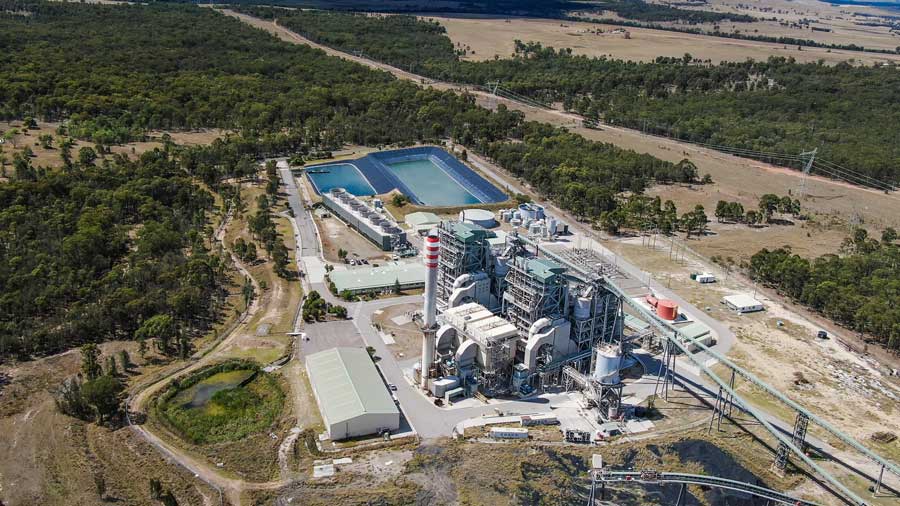It ain’t easy being green… the biomass baseload solution for green energy

Pic: Thana Prasongsin / Moment via Getty Images
Special Report: Sydney based Hunter Energy is planning to recommission the 151-megawatt (MW) Redbank plant using 100 per cent biomass instead of coal to deliver baseload green energy.
Australia’s reliance on ageing coal-fired power stations to generate the bulk of its electricity is a growing concern due to their lack of reliability and impact on the environment.
However, Hunter Energy is looking to provide the 24/7 baseload green energy that currently eludes wind and solar generators while achieving zero net emissions, creating sustainable employment and reducing landfill and waste.
CEO Richard Poole plans to recommission the Redbank power plant it acquired last year as Australia’s largest renewable biomass, baseload power station.
It seeks to achieve this by using waste biomass from sources such as the material removed from bushfire hazard reduction.
This could potentially reduce the impact of bushfires such as those that ripped through Australia in late 2019 while using biomass that would otherwise have been burnt off anyway to generate electricity.
“It is the potential solution to deal with all the old coal-fired power generators shutting down or being removed from the market with biomass generators providing baseload power and significant amounts once fuel resources are established,” Hunter chief executive officer Richard Poole told Stockhead.
He added that using the biomass removed during hazard reduction as feedstock at a reasonable price rather than just “putting it in a pile and burning it”, would be an example of how Australia could make better use of its resources to reduce carbon emissions while providing baseload green energy.
The game plan
Redbank started operating in 2000 as an environmental solution developed by the CSIRO and Ecogen to assist in the removal of waste coal tailings by using waste coal as fuel before shutting down in 2014.
Hunter Energy plans to restart the plant at Warkworth, north of Sydney, in the next 12 months as a pioneer for the waste biomass to power sector.

This is made possible by the plant’s unique (for Australia) circulating fluidised bed technology that means it is the only coal power plant in Australia capable of operating on 100 per cent biomass.
This will generate enough electricity to power 200,000 to 250,000 Australian homes, which is timely given that AGL’s 50-year old Liddell power plant is due to close in April 2023.
Hunter Energy has estimated that about $50m will be needed to complete the project, with Richard Poole saying the main issue was how Redbank would receive the biomass.
“As a fuel, it is not as heavy as coal, so we need a bigger space for it, we need to chip it,” Poole told Stockhead.
“From our point of view, it is really just getting it into the furnace, and we may have some modifications to the feed system, but frankly the plant itself is more than adequate to run on 100 per cent biomass now.” – Richard Poole
The Sydney based company claims the project will generate zero net carbon dioxide emissions because although carbon will be released from burning the biomass, it is essentially contained within a closed loop as the same carbon would be captured when new trees grow.
“It’s a continuous cycle, so you are not adding to the global balance of carbon dioxide,” Richard Poole explained.
Biomass is also recognised as an approved energy source under Australia’s Renewable Energy Act of 2000, which could potentially make Redbank eligible for Large-Scale Generation Certificates.
While biomass currently accounts for just 0.9 per cent of Australia’s electricity generation capacity, the International Energy Agency has said it could generate between 25 per cent to 33 per cent of the country’s energy by 2050.
Future growth, funding and IPO plans
Hunter Energy’s ambitions go further than just restarting Redbank; indeed, it sees the plant as the first step in its goal of building a green energy park at the Redbank site north of Sydney.
The company has mapped out the potential to install a 70MW gas-fired turbine fuelled by waste mine gas, installing a 40MW+ solar farm on buffer land adjacent to the existing plant, installing a battery facility and testing other green energy technologies including carbon capture.

Richard Poole says that preliminary discussions with two mines in the area have already suggested that each could supply enough gas for a 70MW turbine for 25 years, though more analysis would be needed around supply and the quality of the gas.
“We have done some work on the battery, but we need to broker some sort of deal or arrangement with a good operator to make it a financially viable proposition,” Poole added.
“If we can get Redbank firing, it will lead into developing these second, third and fourth projects.”
-Richard Poole
The company is eyeing off a public listing on the ASX later this year and is set to commence a pre-IPO capital raise in the coming weeks to source up to $3m.
This story was developed in collaboration with Hunter Energy, a Stockhead advertiser at the time of publishing.
This story does not constitute financial product advice. You should consider obtaining independent advice before making any financial decisions.
UNLOCK INSIGHTS
Discover the untold stories of emerging ASX stocks.
Daily news and expert analysis, it's free to subscribe.
By proceeding, you confirm you understand that we handle personal information in accordance with our Privacy Policy.








